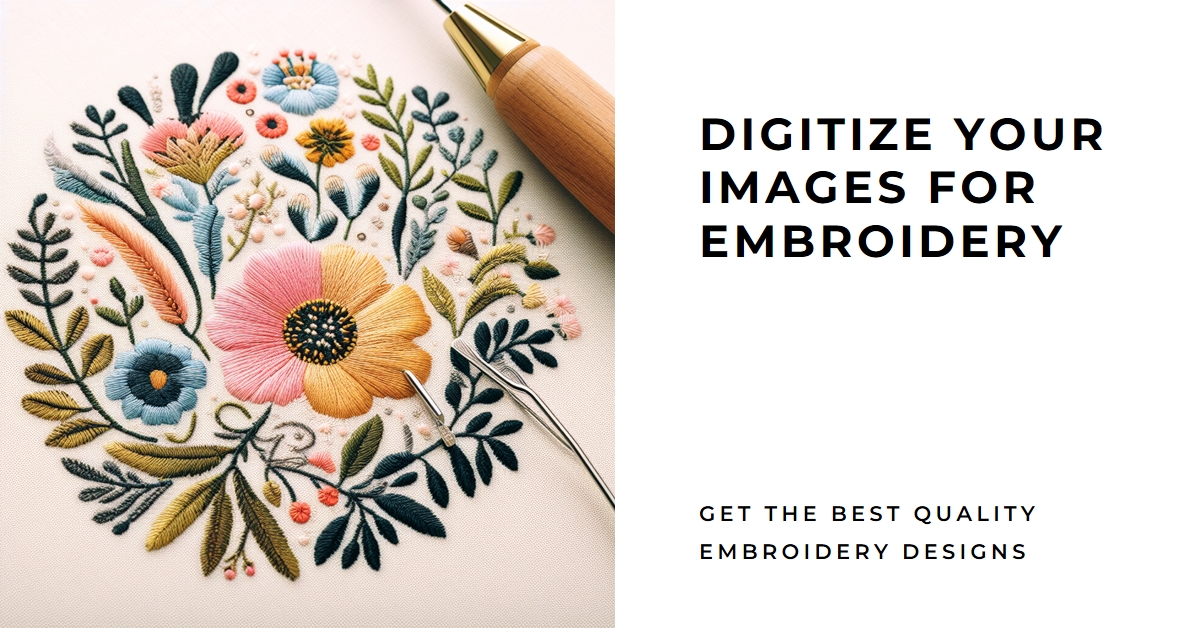Embroidery has been an age-old craft, intertwining threads to create intricate designs that tell stories through stitches. In today’s digital era, the art of embroidery has evolved with the advent of technology, particularly in the form of embroidery digitization. This process involves converting an image into a digital format that an embroidery machine can interpret and reproduce seamlessly. In this exploration, we delve into a crucial aspect of this digitization process— the significance of image resolution.
Understanding Image Resolution in Embroidery
Embroidery digitization relies heavily on the clarity and precision of the source image. Image resolution, measured in dots per inch (DPI), plays a pivotal role in determining the quality of the final embroidered design. When it comes to creating an optimal digitized embroidery file, a higher resolution provides more detail and ensures a smoother conversion process.
Why Optimal Image Resolution Matters
- Precision in Design Detail:The intricate details of an embroidery design can be lost if the source image lacks the required resolution. Higher DPI ensures that every minute element of the design is captured accurately, resulting in a final product that mirrors the original image with remarkable precision.
- Color Gradient and Blending: Embroidery often involves a myriad of colors to create visually appealing designs. Optimal image resolution ensures that the color gradients and blends are faithfully reproduced, preserving the intended visual impact of the design. Optimal Image Digitization for Embroidery now that we understand the importance of image resolution, let’s explore the key steps in achieving optimal image digitization for embroidery.
Transform Your Images into Embroidery Masterpieces! Discover the Art of Digitization:
1. Start with a High-Resolution Image:
The foundation of successful embroidery digitization is a high-resolution source image. When selecting or creating an image for digitization, ensure it has a DPI suitable for capturing intricate details. A resolution of at least 300 DPI is often recommended for optimal results.
2. Choose the Right File Format:
The file format of the source image is crucial for preserving image quality during the digitization process. Lossless formats such as TIFF or PNG are preferred over lossy formats like JPEG to prevent compression artifacts that may degrade image clarity.
3. Image Editing for Clarity:
Prior to digitization, use image editing software to enhance the clarity of the source image. Adjusting contrast, brightness, and sharpness can improve the overall quality, making it easier for the digitization software to accurately convert the image.
4. Use Specialized Digitization Software:
Invest in specialized embroidery digitization software that can interpret high-resolution images effectively. These programs are designed to handle the nuances of embroidery, ensuring that the final digitized file is optimized for the embroidery machine.
5. Test and Adjust:
Before initiating the full embroidery process, conduct test runs with scraps of fabric to ensure the digitized design meets your expectations. Fine-tune the digitization settings if necessary, adjusting stitch density and other parameters for optimal results.
Challenges and Solutions in Image Digitization
Despite the advancements in technology, challenges can still arise during the image digitization process. Understanding these challenges and implementing effective solutions is crucial for achieving optimal results.
1. Small Text and Fine Details:
Small text and intricate details in a design may pose challenges during digitization. To overcome this, consider enlarging small text and simplifying intricate details before digitizing.
2. Color Matching:
Ensuring accurate color reproduction can be challenging, especially when dealing with a wide range of hues. Utilize color management tools within digitization software to achieve the closest possible match to the original image.
Conclusion:
Embroidery digitization is a meticulous craft that seamlessly transforms art into a stitch-perfect masterpiece, particularly when applied to the creation of unique graphic tees. The foundation of this process lies in the careful selection of a high-resolution image, a crucial step to ensure the intricate details of the original artwork are faithfully preserved in every stitch. To bring graphic tees to life through embroidery, it is essential to employ specialized digitization software. This technology serves as the bridge between the digital representation of the design and its physical manifestation in thread.

